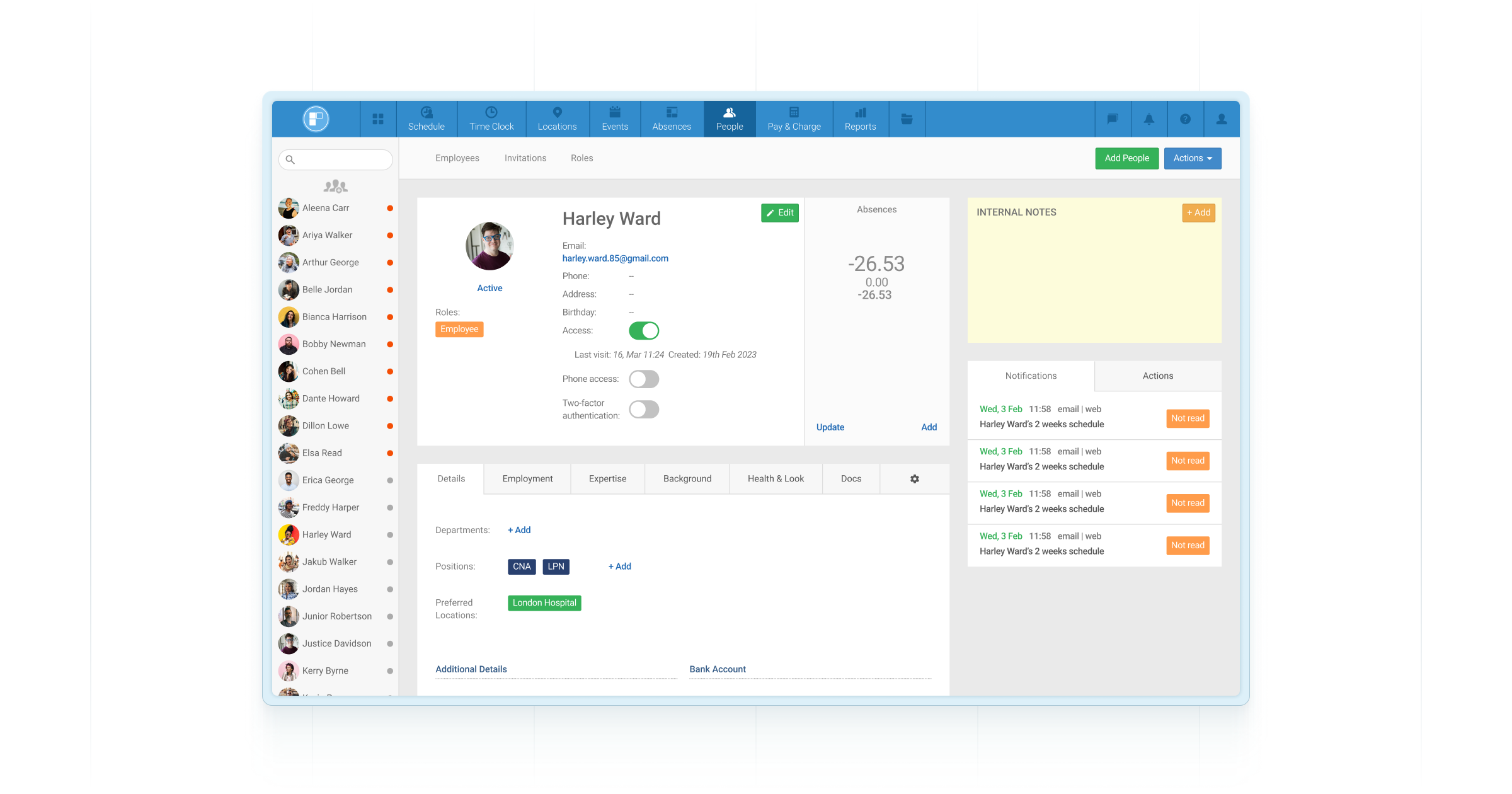Reliable Staffing Management Software Solutions for Modern Organizations
Reliable Staffing Management Software Solutions for Modern Organizations
Blog Article
Releasing the Power of Data: Enhancing HR Methods With Cutting-Edge Staffing Administration Software Application
By harnessing the power of information analytics, organizations can not just boost their recruitment techniques however also optimize worker retention and productivity. The synergy between data-driven insights and advanced innovation offers a compelling opportunity for HR experts to revolutionize their method in the direction of skill administration.
Relevance of Data-Driven Human Resources Approaches
Data-driven Human resources approaches allow firms to maximize their labor force administration, employment processes, and staff member interaction efforts. By analyzing information associated to employee performance, turnover prices, and skill voids, Human resources divisions can recognize fads, forecast future demands, and develop positive solutions to address challenges.
Data-driven human resources approaches also play a critical function in enhancing staff member contentment and retention. With the analysis of staff member comments, performance testimonials, and training results, HR specialists can tailor individual advancement strategies, recognize high-potential employees, and promote a culture of continuous learning and development within the organization. Data-driven understandings allow HR teams to straighten their strategies with the overall organization objectives, ensuring that ability monitoring initiatives straight add to organizational success.
Advantages of Staffing Management Software
Making use of staffing administration software application improves the recruitment and onboarding procedures for HR departments, boosting effectiveness and precision in ability procurement. One substantial advantage of this software application is the capacity to centralize candidate data, making it quickly available for recruitment teams. By having all applicant info in one location, human resources professionals can successfully track candidate progress, interact properly with prospective hires, and guarantee a smooth recruitment experience.
Furthermore, staffing management software application typically consists of features such as return to parsing and keyword matching, which aid in quickly identifying leading candidates that match the work demands. This automation lowers the time spent on hands-on return to screening, permitting human resources staff to concentrate on even more critical tasks. staffing management software. In addition, these systems can integrate with job boards and social media systems, expanding the reach of task postings and drawing in a diverse swimming pool of prospects
Furthermore, analytics and reporting devices within staffing monitoring software program provide valuable insights right into recruitment metrics, such as time-to-fill and cost-per-hire. This data-driven approach enables HR teams to make enlightened choices, enhance employment methods, and boost general hiring procedures. By leveraging these advantages, organizations can simplify their talent purchase initiatives, improve prospect experience, and eventually build a strong labor force.
Enhancing Recruitment Processes With Information
By leveraging data, companies can make more informed decisions throughout the recruitment lifecycle, eventually leading to far better hires and enhanced retention rates. One essential way information improves employment procedures is by maximizing task postings based on insights from past successful hires.
Moreover, data analytics can streamline the testing and choice procedure by determining patterns in candidate certifications and performance indications. This makes it possible for recruiters to focus their initiatives on prospects who are most likely to do well in the duty, conserving time and sources. Furthermore, data-driven recruitment strategies can help in reducing bias in the hiring procedure by giving objective understandings right into candidate qualifications and potential fit within the organization. In general, incorporating information right into recruitment procedures equips organizations to make smarter hiring choices and construct high-performing teams.
Improving Employee Retention Via Innovation

One means modern technology can boost worker retention is via using staff member interaction systems. These platforms allow for real-time responses, acknowledgment, and interaction in between workers and monitoring, cultivating a culture of recognition and support. In addition, innovation can enable personalized understanding and advancement programs tailored to individual worker needs and career ambitions, increasing task fulfillment and commitment.
In addition, information analytics tools can help companies recognize patterns and trends associated to employee turnover, enabling them to take aggressive measures to deal with prospective issues before they intensify. Overall, by leveraging innovation successfully, organizations can produce a much more encouraging and appealing work setting that urges employees to stay and expand within the company.
Optimizing Workforce Productivity With Data

Via the analysis of information, HR departments can determine patterns and patterns that affect performance degrees. For example, by tracking worker work hours and project conclusion rates, companies can enhance work routines to make certain that jobs are effectively distributed amongst team participants. Furthermore, information can expose ability spaces within the labor force, enabling HR to implement targeted training programs that enhance staff member abilities and general performance.
Furthermore, data-driven efficiency examinations allow supervisors to offer particular comments and support to employees, cultivating a society of continual renovation. On the whole, leveraging data to optimize workforce efficiency is a calculated approach that equips organizations to attain their objectives successfully and effectively.
Conclusion
Finally, making use of sophisticated staffing monitoring software program can significantly enhance HR techniques by leveraging the power of data. By integrating data-driven recruitment procedures, improving staff member retention with technology, and maximizing workforce productivity, organizations can improve their operations, make even more educated choices, and ultimately accomplish better success in handling their human funding. Welcoming these technological innovations is vital in the ever-evolving landscape of human source management.
Data-driven Human resources methods allow firms to enhance their workforce management, employment procedures, and employee involvement efforts. By assessing information related to employee performance, turnover rates, and skill spaces, Human resources divisions can identify fads, forecast future needs, and create proactive services wikipedia reference to deal with difficulties.

Report this page